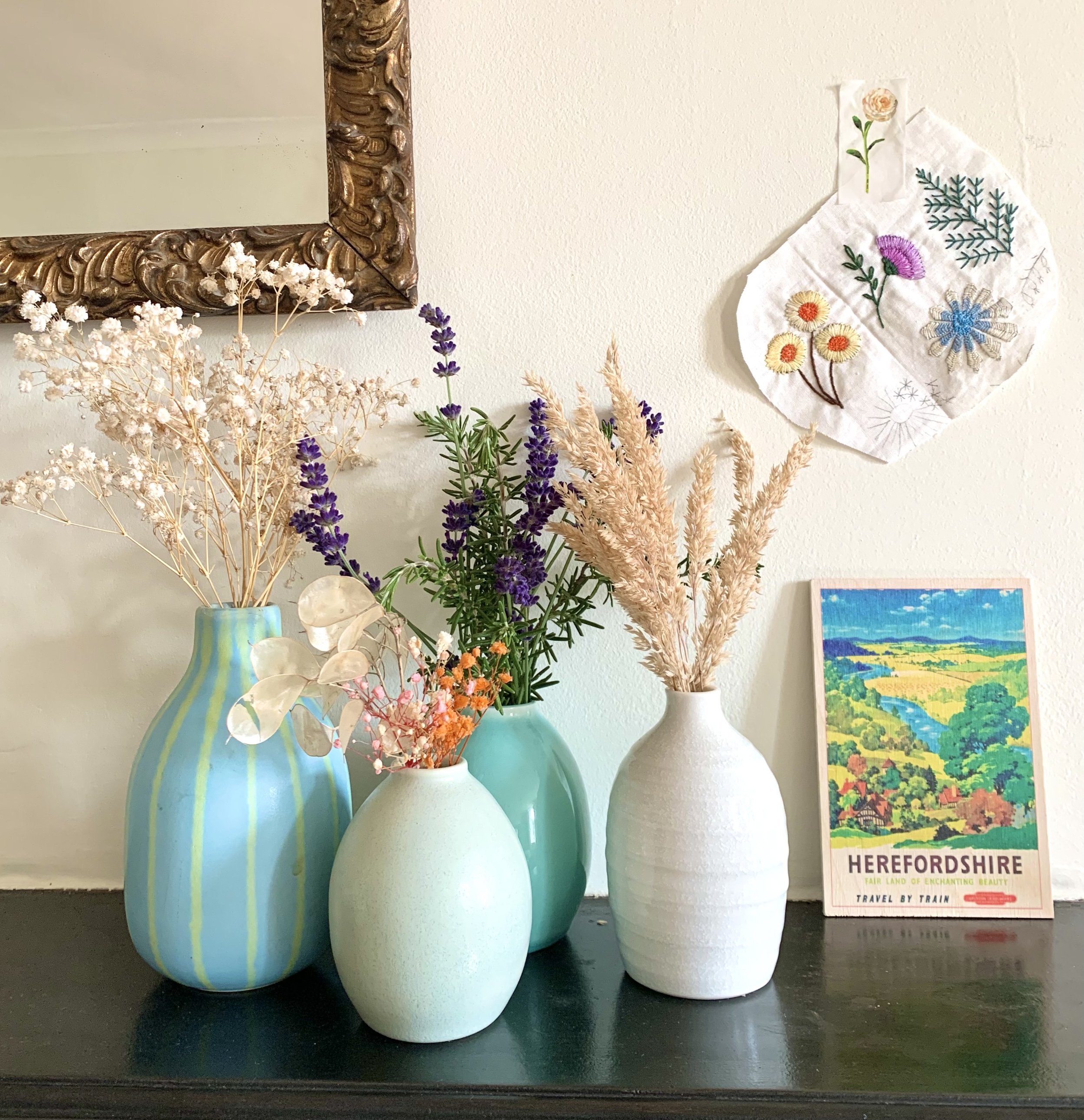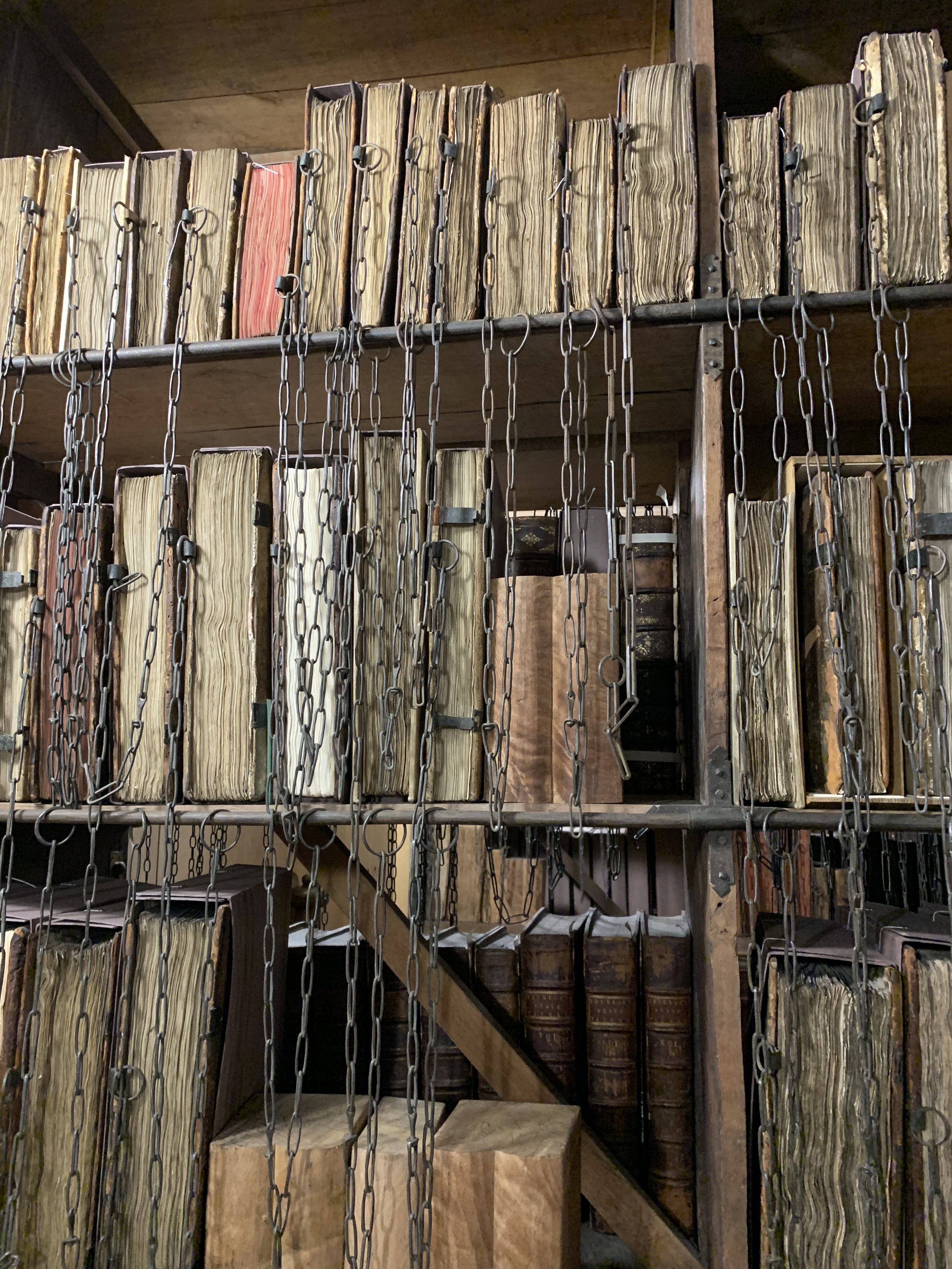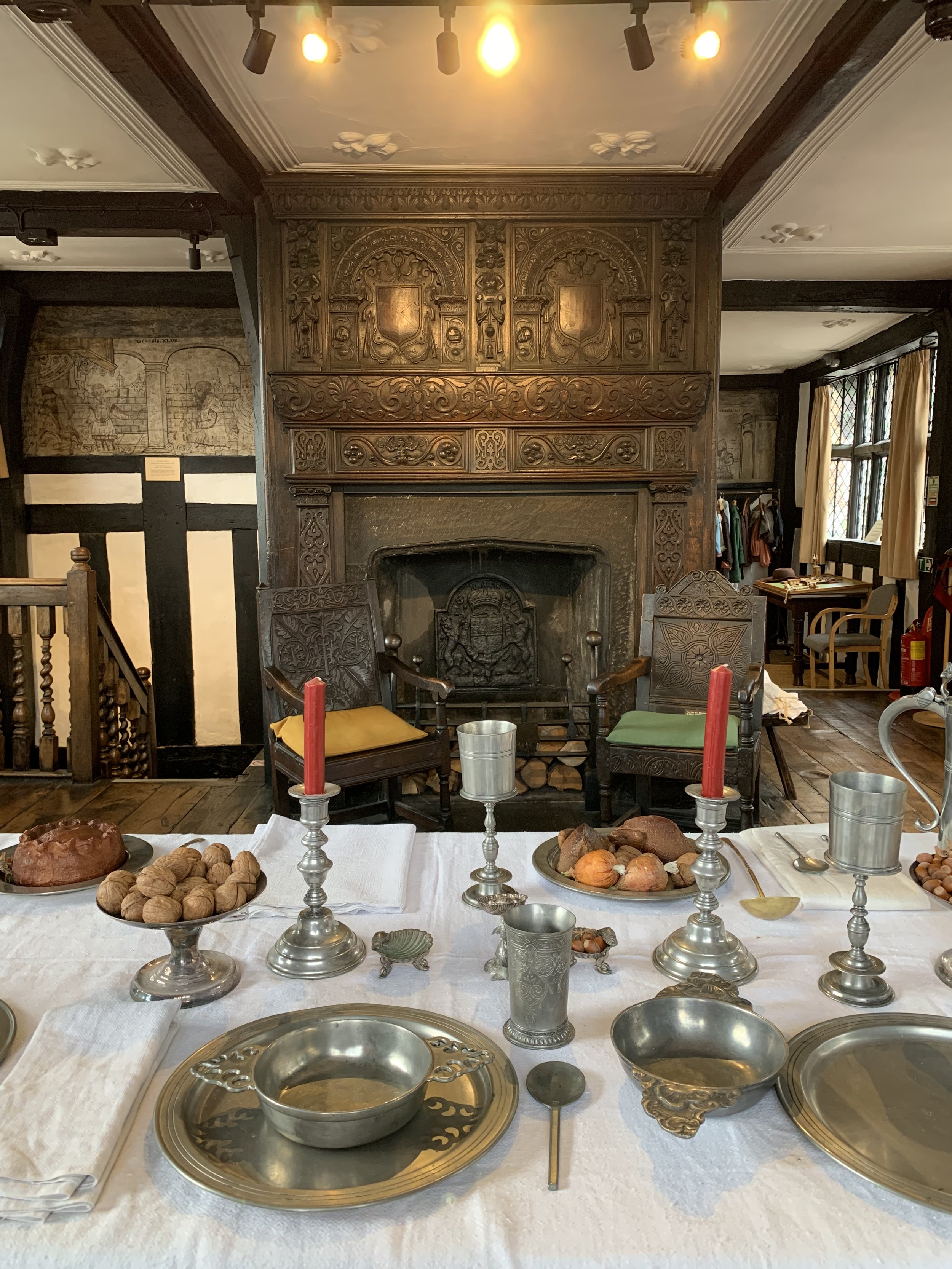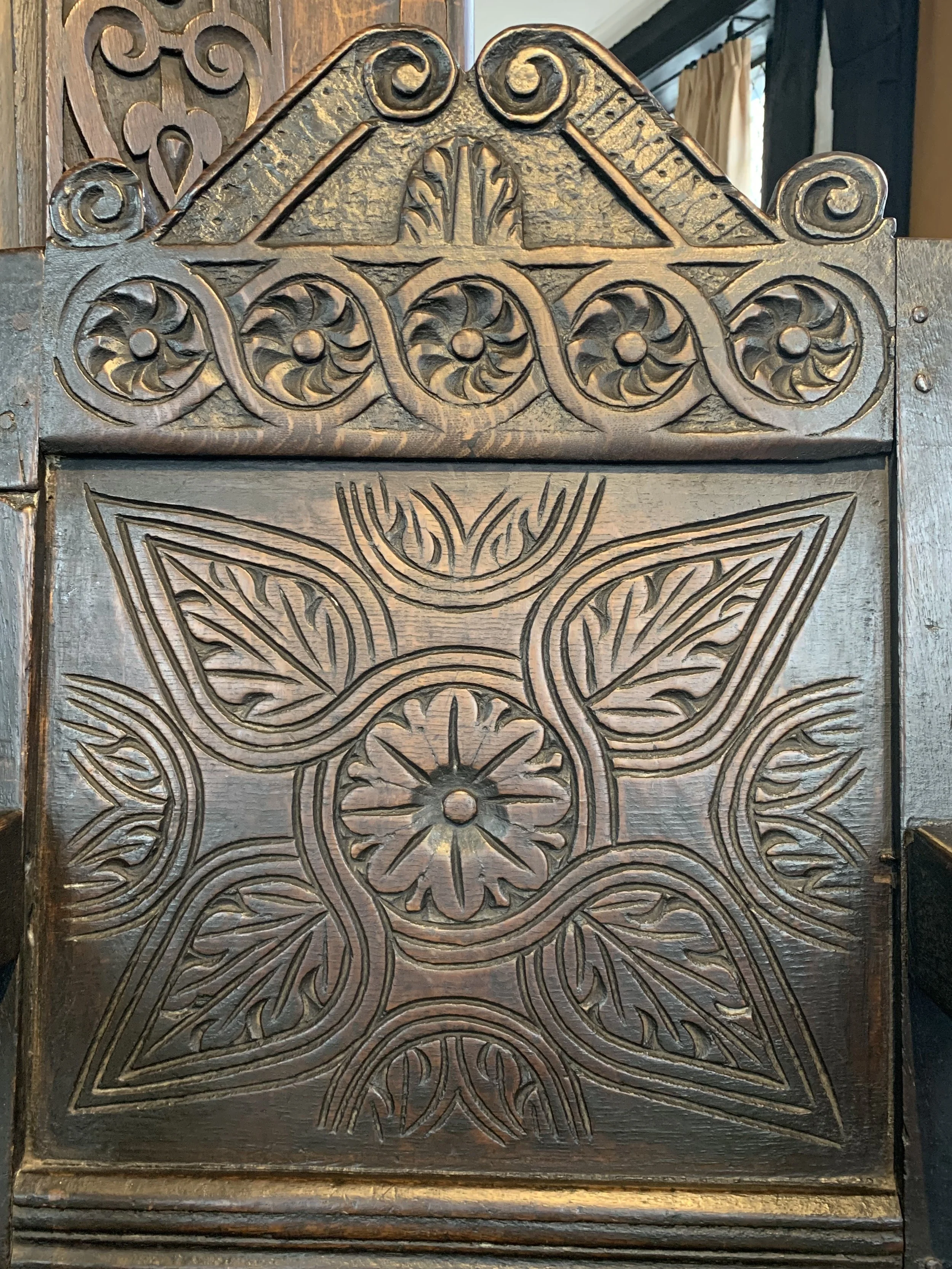Postcard from Hereford
/As summer fades, we arrived home from holiday on the day the Queen died. I didn’t expect to feel such a sense of loss at this news and yet…probably like most British people who have lived all their lives with her as a constant, it is hard to process. We have a new King…the words sound strange and uncomfortable. Somehow too, the constant tabloid and social media wittering about the trials and tribulations of the royal family seemed swept away into insignificance in the magnitude of the moment. We have a new Queen consort and a new Prince and Princess of Wales. It is time to move on and close those difficult chapters whose ghosts seemed never to quite be laid to rest. It is a reminder of how nothing is forever and how names and titles are passed from generations, each of whom begins again with a clean page. We will all miss her Majesty in some way or other and can only be thankful for her exemplary life of service and dedication.
Before all this happened though, we had been on a little road trip on a southern westerly path in search of sunshine, seaside and perhaps in some measure, for me at least, a literary pilgrimage too. I hope you will enjoy a few journal postings about our travels and that his little series of ‘Postcards’ will give you a flavour of some great places to visit.
Hereford was a last minute stop on our journey to break the driving and it was such an unexpected surprise that I wanted to write about it first. I have never really been to this part of the UK before, the quiet counties of Herefordshire and Worcestshire, but as this was not far off our route, it seemed like an opportunity to see a new city and we settled on Hereford because of it’s picturesque associations with the River Wye. In fact it is the most lovely place with a fabulous cathedral situated on the banks of the river.
It is a gentle city with lovely browsy shops and lots of historical features. 16 miles east of Wales, it was granted a town charter by Richard 1 in 1189. William Gilpin and 18th century vicar triggered a wave of tourism to the town with his book ‘Observations of the River Wye’ (17832) and it drew artists and creatives from far and wide. The rector Dr. John Egerton launched river cruises to accommodate all these tourists in 1785, when he built a special boat for the purpose and thus created one of the first tourist excursions in the country.
The Cathedral itself was begun in 1079 although it is believed that the site was used as a place of worship as far back as the 8th century. I was immediately smitten with it for its interesting entrance, a sort of gothic portico. Inside the interiors are rather unusual and I christened it, almost immediately, the Rick-Rack cathedral because so much of the stone work reminded me of the wavy kind of trim that rick-rack adds to fabric.
The building has a fairly turbulent history. Although it was begun in the 11th century, it took approximately 440 years to finish, with various bishops finding ways to add chapels and towers, sometimes by rather dubious means. In the English Civil War, Hereford was tossed between the warring factions, even enduring a siege. Great damage was done to the fabric of the building during this time but it wasn’t until the 1700’s that restoration work got started. However in 1786 a disaster befell the cathedral when the west tower fell causing yet more damage to the building in doing so. In 1841 a major restoration project was begun and continued until 1863 when it was reopened and further works were done in the period 1902-1908 with the highly ornate facade in commemoration of Queen Victoria’s diamond jubilee, which is why it felt very much like some of the great museums in London in the style of the stone work. It’s a magical space though and calming and welcoming one too, with fabulous patchwork floors and painted ceilings as well as the compulsory magnificent stained glass windows.
While the Cathedral is lovely to visit, it harbours two treasures that are probably way more interesting than the building itself : the Mappa Mundi and the Chained Library.
I was completely blown away by the whole idea of the ‘Chained Library’, a beautifully preserved and unique collection of ancient books still bearing their ancient chains, rods and locks from a time when books were a rare and precious. Across Europe from the middle ages, chaining books was the security system of necessity. Books were labourisly made and treasured and needed to be protected. The books face outwards with the page ends foremost, so that they could be removed from the shelf and viewed on the desk below without tangling or twisting the chain. Theological scholars could sit in the Cathedral library and study, but they couldn’t take the books away. It is a stunning collection and a reminder of a time, so very long ago, it is hard to imagine in the 21st century.
The library is now housed within the confines of the cathedral in a space that can be properly temperature controlled, but also allows access to these ancient texts. I had never seen anything quite like this and would say that Hereford is worth a visit just to see this…but there is more…. the ‘Mappa Mundi’
This astonishing map records a snapshot of the world viewed in the 13th century. It is drawn on calf skin and reflects the thinking of the day. Jerusalem is seen at the centre of everything, but it has over 500 small inkings that document not just cities and towns, but biblical events, images from the natural world and ideas of peoples of the world too.
The author is known to be Richard of Haldingham (Holdingham & Sleaford in Lincolnshire, today) and his attention to detail is fascinating, as is the way it is laid out. To have this view point in the 13th century seems rather extraordinary. East is at the top and destinations such as Constantinople and India are all documented. Ancient landmarks such as the Pillars of Hercules are recorded and seas and rivers are noted, even if sometimes rather distorted. It is an incredible piece of history to see and I confess I had never even heard of it before. Hereford seems full of surprises in fact.
There were other things to see too. The famous ‘Black and White house’ museum is a rare survivor, dating from 1621. This is situated in the centre of the city and is fine example of a jacobean house.
The interiors tell the story of life in these times.
There were some fabulous reproduction costumes on display too….
I have to confess that I don’t know so much about the textiles of this period but my interest was piqued by the embroidered bed hangings and the stunning motifs that were used to embellish textiles at this time. There were interesting carved motifs too…I mean wouldn’t this make a great design for an embroidery?
All in all, I cannot recommend a visit to Hereford highly enough. In some ways it was timely…with the loss of our Queen, there has been time to think about the long history that stretches behind her…the conflicts between crown and parliament and church that took centuries to finally form the country we know to today and the buildings and people who made it all happen. As we begin a new page in history with Charles 111 at the helm, what will be written on it?
I’ll be back soon with autumn projects and another postcard from our travels in Devon.
Toodle…ooo Ruby x
You can read more about the Wye valley history and it’s tourism in this lovely article here
You can find out more about Hereford Cathedral and it’s treasures here













